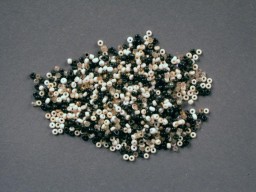<< Previous | Displaying results 781-790 of 6719 for "" | Next >>
-
Lebensborn program brochure
ArtifactFront cover of a brochure advertising the Lebensborn program. The brochure describes the program's maternity homes and requirements that expectant mothers must meet to be accepted.
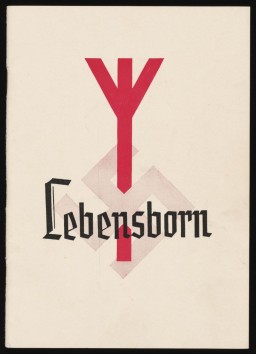
-
A Kripo agent's identifying warrant disc
ArtifactOfficial identification tag (warrant badge) for the Criminal Police (Kriminalpolizei or Kripo), the detective police force of Nazi Germany. These badges were generally suspended from a chain and included the officer's identification number on the reverse.
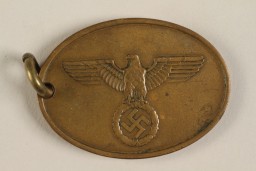
-
Reverse of a Kripo warrant disc listing the officer's number
ArtifactReverse of the official identification tag (warrant badge) for the Kriminalpolizei or Kripo, the detective police force of Nazi Germany. It reads Staatliche Kriminalpolizei (State Criminal Police) and identifies the officer's number as 8409.

-
Postwar testimony of Rudolf Höss
ArtifactA page from the transcript of the testimony given by Rudolf Höss at the International Military Tribunal at Nuremberg. At the trial, Höss testified about the gassing of Jews of Auschwitz, where he was commandant. He responded in German and communicated through a translator. Testimony dated April 2, 1946.
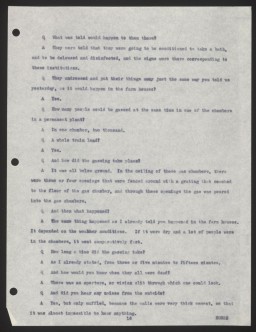
-
Hitler Youth "Youthfest" badge
ArtifactThis badge shows the Hitler Youth insignia and Nazi German national symbol superimposed over ring bearing the raised text, "Deutsches/Jugendfest 1936." Beginning in 1933, the Hitler Youth and the League of German Girls had an important role to play in the new Nazi regime. Through these organizations, the Nazi regime planned to indoctrinate young people with Nazi ideology. This was part of the process of Nazifying German society. The aim of this process was to dismantle existing social structures and…
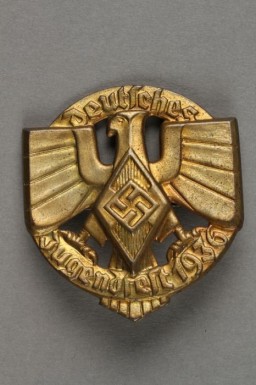
-
League of German Girls jacket
ArtifactThis League of German Girls jacket has two embroidered cloth patches handstitched to the upper left sleeve: a dark triangle displaying the name of the member’s region, South Franconia (Süd Franken), and a Hitler Youth insignia. Beginning in 1933, the Hitler Youth and its organization for girls and young women, the League of German Girls, played an important role in the new Nazi regime. Through these organizations, the Nazi regime indoctrinated young people with Nazi ideology, including antisemitism and…
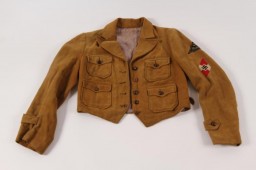
-
Hitler Youth uniform
ArtifactHitler Youth summer uniform jacket with an armband and insignia designating the regiment and district to which the member belonged. Beginning in 1933, the Hitler Youth and its organization for girls and young women, the League of German Girls, played an important role the new Nazi regime. Through these organizations, the Nazi regime indoctrinated young people with Nazi ideology, including antisemitism and racism. All prospective members of the Hitler Youth had to be "Aryans" and "genetically healthy."…
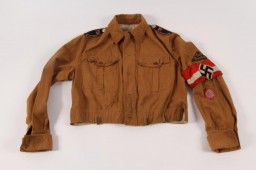
-
Hitler Youth knife and case
ArtifactHitler Youth knife and case shaped like a military bayonet, with the emblem of the Hitler Youth, emphasizing the paramilitary nature of the organization.

-
Hitler Youth proficiency badge
ArtifactThis Hitler Youth proficiency badge would have been awarded for the successful completion of a series of tests measuring physical and ideological proficiency. Success in these tests was rated according to criteria in the Hitler Youth identity document and performance book known as the Leistungsbuch. On this badge, the arrow shape (the tyr-rune) represents the warrior god Tyr. Beginning in 1933, the Hitler Youth and the League of German Girls had an important role to play in the new Nazi regime. Through…
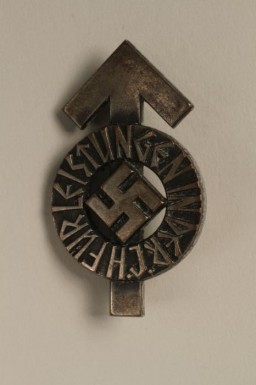
-
Beads used by a Dutch Jewish girl in hiding
ArtifactThese tiny black, white, gold, and clear glass beads were used by Rachel “Chelly” de Groot from November 1942 to April 1944 and recovered by her brother Louis after the war. Chelly used the beads to make handicrafts. On November 16, 1942, Chelly, then 15, Louis, 13, and their parents Meijer and Sophia left Arnhem and went into hiding after the Dutch police warned them of a raid. Meijer and Sophia hid in Amsterdam while Chelly and Louis moved around to different locations. In summer or fall 1943,…
